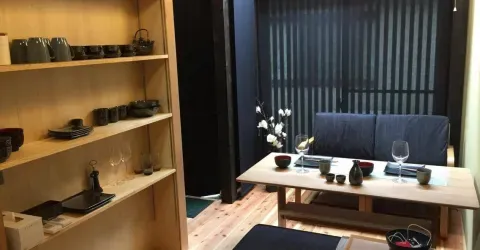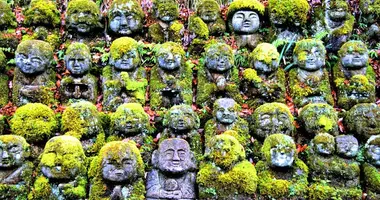Chionin Temple
Chionin Temple 知恩院
- Chion-in History
- Largest Bell in Japan
- Sanmon Gate
- Chion-in Access
- Hotels Near Chion-in
- Chion-in Map
- Japan Temples & Shrines

- Chionin was founded by Honen in 1294.
- Located in eastern Kyoto.
- Jodo sect temple.
- Largest temple bell in Japan.
- Close to Maruyama Park & Yasaka Jinja
History
Chionin is the headquarters of the Jodo sect of Buddhism and built in 1294 by the Priest Genchi on the site where the founder Honen (1133-1212) first preached and later fasted to death.
Chionin's re-construction in 1633 was financed by the Tokugawa shogunate and the colossal scale of the project is a proclamation of Tokugawa power and the supremacy of the Jodo sect.
Followers of Jodo sect of Japanese Buddhism seek to be reborn in Jodo (Pure Land) or the Western Paradise of Amitabha and their Namu-Amida-Butsu prayer-formula is their most well known characteristic.

Sanmon gate at Chion-in Temple, Kyoto
Largest Bell in Japan
Chionin is also home to the largest bell in Japan, 5.4 meter-high, weighing some 74 tons and cast in 1633. 17 monks are needed to ring the bell at New Year. The impressive interior is both immense and ornately beautiful.
Spacious grounds covering 14.5 ha. spread into the surrounding hills. The temple contains many art treasures including an illustrated biography of Honen, designated as a 'National Treasure', along with sliding doors painted by members of the Kano school and a garden by Enshu Kobori.

Sanmon gate at Chion-in Temple, Kyoto
Sanmon Gate
There is also a massive two-story, 24 meter-high Sanmon Gate, pictured in the photo below.
This is the biggest temple gate in Japan which sets the tone for the large buildings within, which include the main hall with an image of Honen and the Dai Hojo, connected by a nightingale floor made by Jingoro Hidari. The statue of Honen is said to be self-carved by the master.
The Gongen-do mausoleum enshrines the spirits of Tokugawa Ieyasu (1543-1616), his son Hidetada (1579-1632; second Tokugawa shogun) and the grandson Iemitsu (1604-1651) (third shogun).
The Assembly Hall is popularly known as the "Hall of One Thousand Mats" - though there are in fact only 360 tatami mats in this huge space.
The Kyozo (Sutra Library) dates from 1616 and contains more than 5,600 volumes of the Issaikyo Buddhist sutras.
Honen's tomb is located in the temple grounds along with the Seishido and the Karamon Gate built in 1633.
The wood for the temple was selected from the best trees in the forests of the Kiso Valley in Gifu Prefecture.
Admission Fee; 9 am-4 or 4.30 pm.

The huge two-storey Sanmon gate at Chion-in Temple, Kyoto

Chionin Temple

Main Hall
Chionin Access
The temple is a 15-20 minute walk from Shijo Keihan Station, or 10 minutes from Higashiyama Station on the Tozai Line.
Chionin is north of Yasaka Shrine and adjacent to Maruyama Park. North of Chionin is Heian Shrine, Shoren-in Temple and the museum area of Okazaki, with Nanzenji Temple a little further to the east. To the south it is not far to Kodaiji Temple and Kiyomizudera on foot.
By Kyoto bus, take 2, 46, 201, or 20 and get off at Chionin-mae.
Chionin Temple
400 Hayashita-cho, Higashiyama-ku, Kyoto.
Tel: 075 531-2111
By bicycle from Kiyomizu to Chionin is a 10-15 minute ride.
Hotels near Chion-in
For visitors wishing to stay in the vicinity of Chion-in Temple, the Kyoto Gion Hotel, the 11-room Japanese-style Ryokan Motonago and the Gion Hatanaka are all good options in this classy area of Kyoto.

Chion-in Temple in Kyoto is close to a number of exclusive Japanese ryokan and restaurants around Maruyama Park and Yasaka Shrine
Chion-in Temple Map
Books on Japanese Temples
Chionin Temple: read a guide to Chionin Temple in Kyoto, famous for its massive Sanmon Gate and huge temple bell.





























